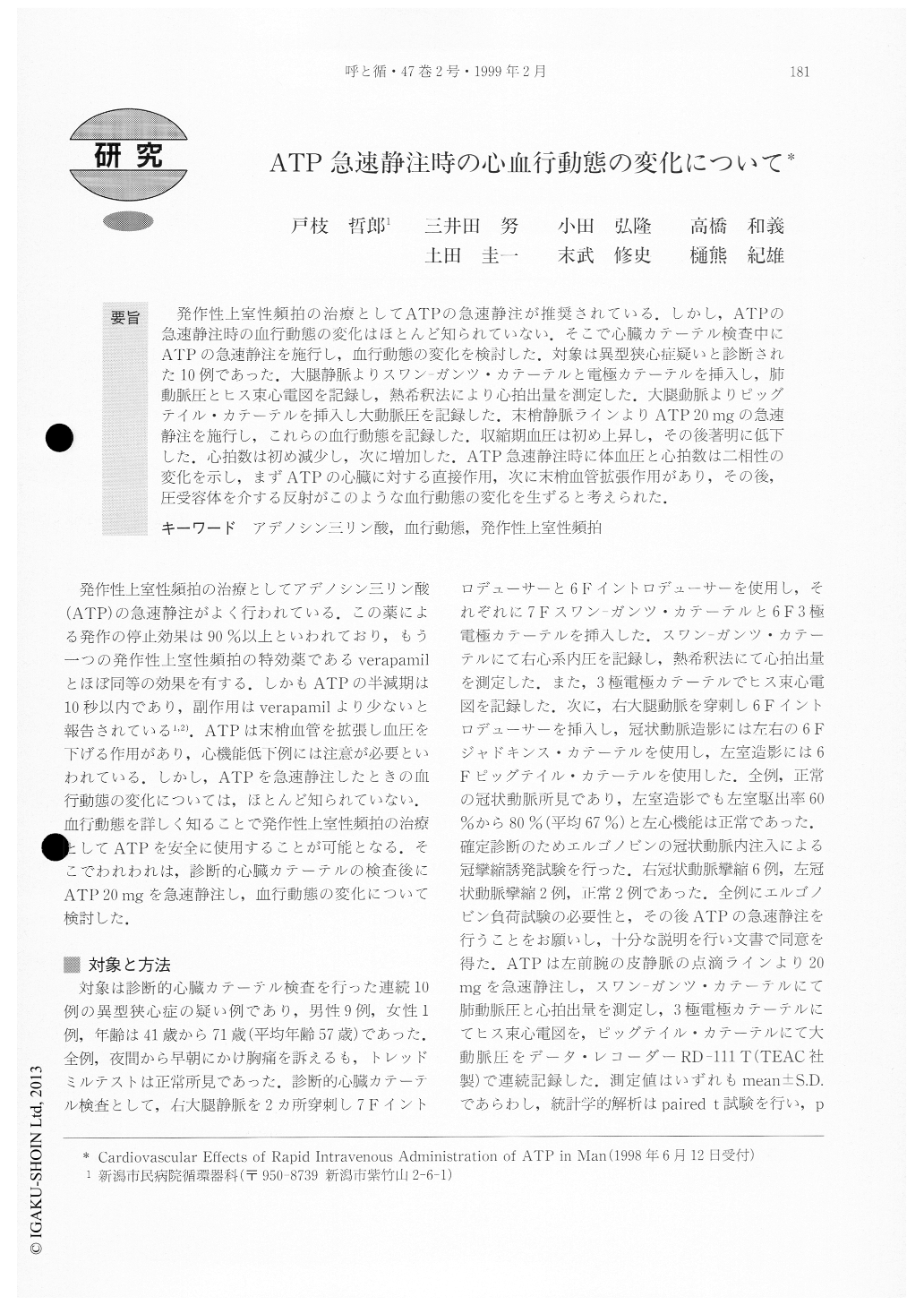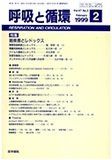Japanese
English
- 有料閲覧
- Abstract 文献概要
- 1ページ目 Look Inside
発作性上室性頻拍の治療としてATPの急速静注が推奨されている.しかし,ATPの急速静注時の血行動態の変化はほとんど知られていない.そこで心臓カテーテル検査中にATPの急速静注を施行し,血行動態の変化を検討した.対象は異型狭心症疑いと診断された10例であった.大腿静脈よりスワン-ガンツ・カテーテルと電極カテーテルを挿入し,肺動脈圧とヒス束心電図を記録し,熱希釈法により心拍出量を測定した.大腿動脈よりピッグテイル・カテーテルを挿入し大動脈圧を記録した.末梢静脈ラインよりATP 20mgの急速静注を施行し,これらの血行動態を記録した.収縮期血圧は初め上昇し,その後著明に低下した.心拍数は初め減少し,次に増加した.ATP急速静注時に体血圧と心拍数は二相性の変化を示し,まずATPの心臓に対する直接作用,次に末梢血管拡張作用があり,その後,圧受容体を介する反射がこのような血行動態の変化を生ずると考えられた.
Adenosine triphosphate (ATP) is the drug of first choice to terminate paroxysmal suprayentricular ta-chycardia such as atrio-ventricular (AV) nodal or AV reentry. ATP must be intavenously injected in a bolus because of its short half-life. However, the hemodyna-mic changes after the intravenous administration of ATP have remained unknown. The present study evalu-ates the hemodynamic effects of ATP in 10 patients with variant angina. who underwent diagnostic cardiac cath-eterization. Systemic arterial pressure was measuredfrom the aorta through a pig-tail catheter inserted via the right femoral artery. A balloon-tipped flow-directed thermodilution catheter was introduced through the right femoral vein to the pulmonary artery to measure cardiac output and pulmonary arterial pressure. The recording of the His bundle electrocardiogram was accomplished by the passage of a tripolar catheter from the right femoral vein. Blood pressure and heart rate respectively showed biphasic changes. Immediately after ATP administration. systolic blood pressure in-creased from 141±22 mmHg to 151±23 mmHg and, 48±13 seconds later, it decreased markedly to 106±18 mmHg. R-R interval on the electrocardiogram was first Prolonged from 865±192 msec to 945=189 msec and. 59±11 seconds later, it was reduced to 736±144 msec. A -H interval on the His bundle electrocardiogram became longer 42±9 seconds after the administration of ATP. There were no significant changes in cardiac output or pulmonary arterial pressure. An increase in systolic blood pressure and R-R interval was associated with direct effects of ATP on the heart, such as the sinus node and the coronary artery. A decrease in systolic blood pressure was induced by vasodilation of the peripheral vessels and then heart rate was increased clue to baroreceptor-mediated vagal withdrawal. It is impor-tant to understand these hemodynamic changes. when the intravenous administration of ATP is performed to terminate paroxysmal supraventricular tachycardia.

Copyright © 1999, Igaku-Shoin Ltd. All rights reserved.


